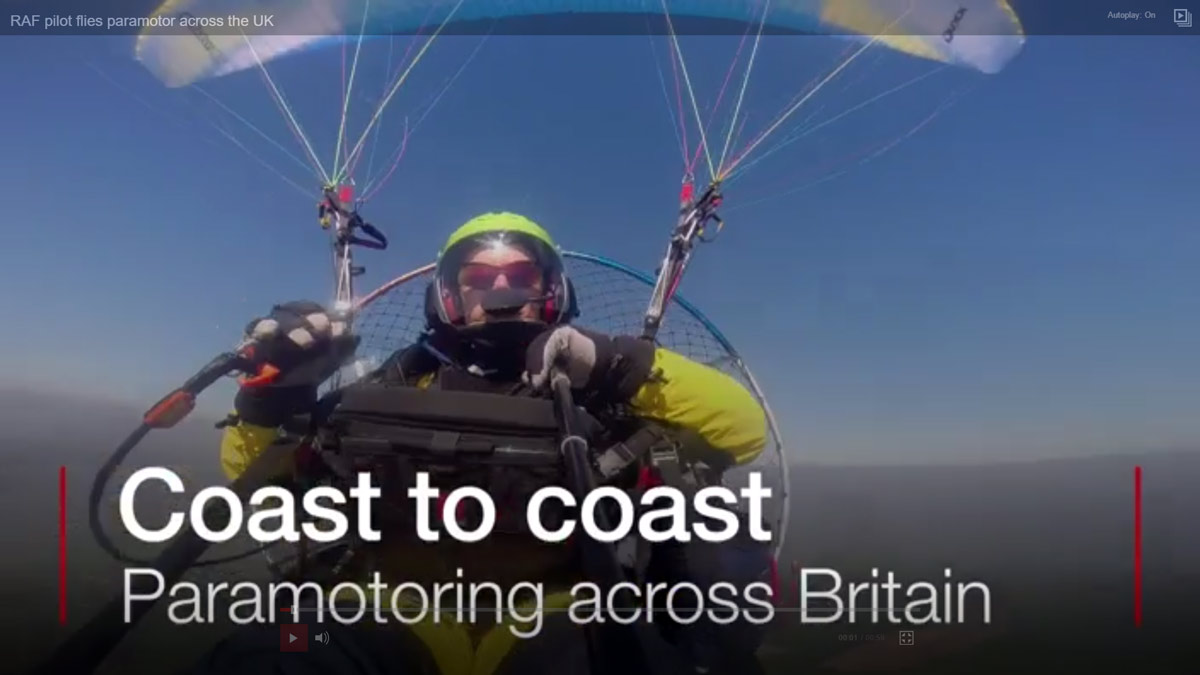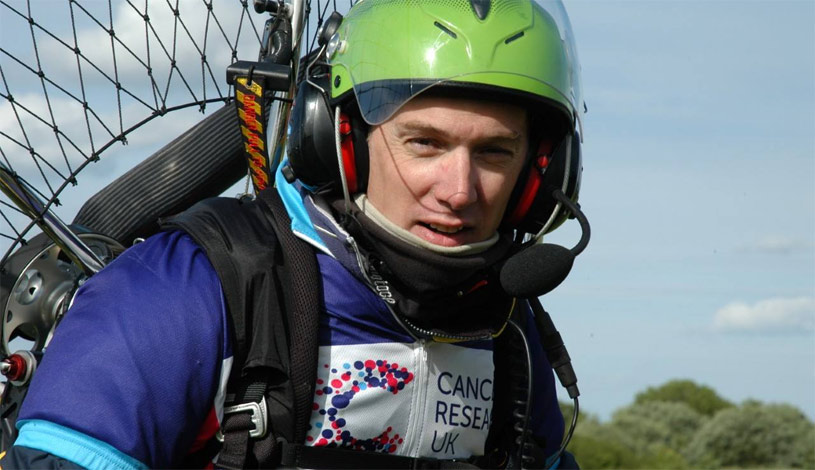
Giles Fowler flew from the West coast of Wales to the East coast of England in a paramotor to raise funds for Cancer Research UK. His challenge was to fly non-stop without refuelling either on the ground or in the air. He expected to take between 8-9 hours to fly nearly 500 km non-stop, which had not been attempted in the UK before.
He used a Bailey engine, Dudek Hadron wing, an Icaro X helmet and Naviter Oudie 4 for navigation, crucial for avoiding any airspace along the route.
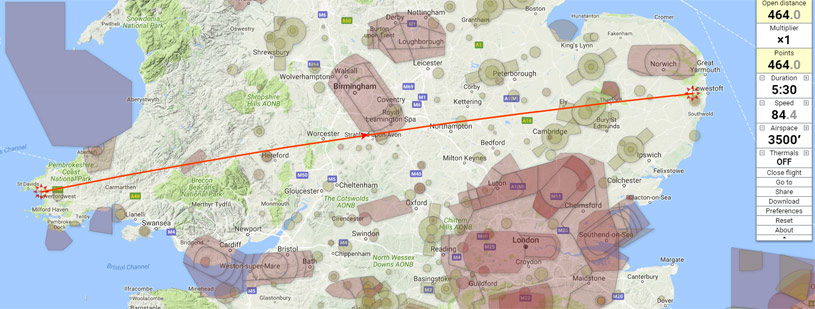
When he set up on the Welsh coast, it was pleasant with a moderate Westerly wind. But off to the east, where he was heading, the wind was howling. He timed his flight to coincide with the wind weakening in his intended landing field in Norfolk. The problem was, he got there too quickly…
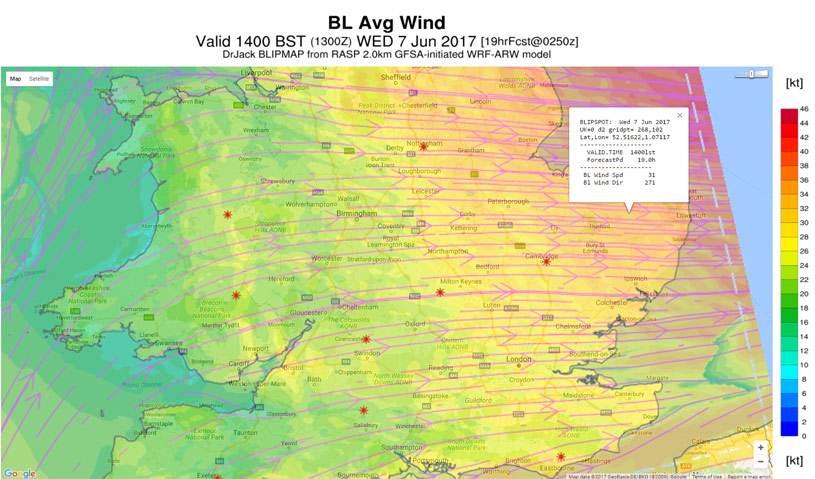
“It was certainly a very challenging and very difficult flight”. The powerful tailwind meant he completed the 464km crossing in 5h30, but had to deal with wicked turbulence near the Brecon Beacons, and again on landing.
I knew the first ridge of the Brecons would give me a boost, so I didn’t need to waste fuel climbing. “I was right, I got lifted 1000ft, but then the air got a bit smashy, I had to really pay attention to control the wing. I also had to brace myself against the extra weight of the fuel which wanted to pendulum me.”
Because this was to be a non-stop flight, Giles had to load up with an extra large fuel tank. Trying to calculate the fuel consumption was difficult, because the extra weight uses fuel, as well as the extra drag from the enlarged fuel tank. He flew at half trim (moderate acceleration) throughout the flight as he felt it was the most efficient speed. “If you fly at full speed you don’t go that much faster,” said Giles, “but you burn a lot more fuel trying to maintain level flight.”

After the Brecons it’s relatively flat, but the air was ever-changing. “I got into a section of heavy sink. I was on three quarter power and still going down? Then I looked up and saw undulations in the clouds, and realised I was in the wrong part of a wave. I tried to line up with lifty looking clouds after that, to maintain my height.”
Towards the east coast he really started to notice the wind. “When I came in over the field I had fully opened the trims and had some forward speed on idle, so I dropped in to spot. I had to touch the brakes a bit on finals, which caused the tucks you can see on the video: having the wing fully reflexed doesn’t mix well with brake input.”
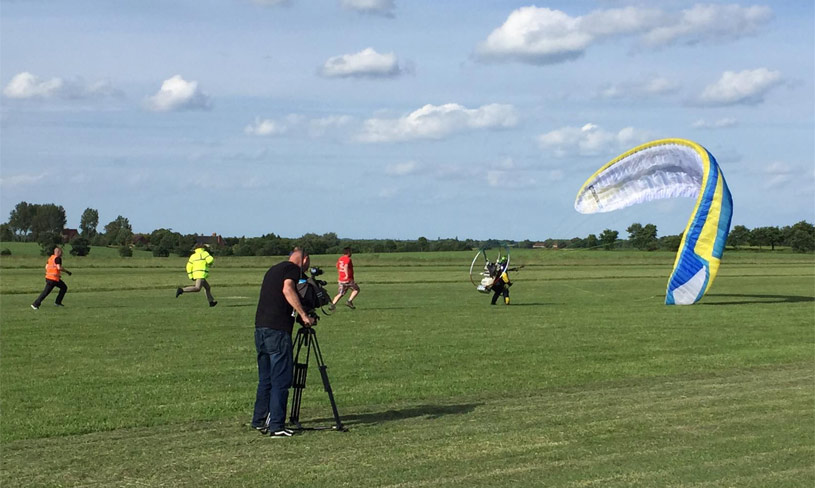
The flight has raised over £2,900 for Cancer Research. Says Giles: “A close friend recently suffered from, but is now recovered from, Breast cancer. The only way more people can survive cancer is to carry on researching a way to combat it, but research takes money.” If you would like to support this achievement, please donate to his Just Giving page to give others a second chance at life.

The BBC were waiting for him at the landing field. Check out the video

